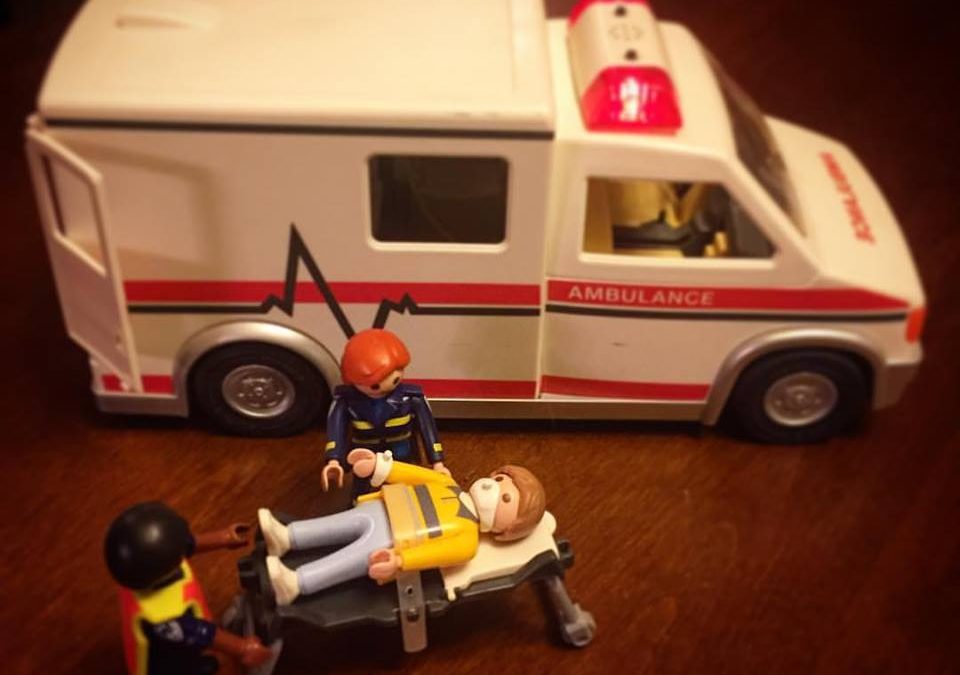Chances are, you, or someone you know well, will need to ride in an ambulance at some point in your life. Modern paramedics and EMT’s are trained to administer life-saving treatments and medications in emergency situations and then stabilize patients for transportation to hospitals. They may be called to your home for a health or medical crisis or to the scene of an accident. When they arrive they will quickly assess the surroundings, determine the injuries and begin to administer comfort, relief from pain and stabilize wounds for transport. Their job is not to determine cause or assign blame.
Imagine: An ambulance screeches to a stop on a two-lane highway, lights and sirens blazing. There is broken glass and plastic scattered across the skid-marked road and around a smashed up car, which is resting on it’s roof. A pickup truck with a crushed front grill sits nearby while a dazed looking man leans against it, talking to a police officer. Another officer, beside the car motions to the EMT’s to come over. A teenaged girl, with blood on her hair and face, hangs upside-down, suspended by a seatbelt. She is crying and moaning in pain.
“Looks like you’ve made a mistake” says the EMT.
The girl sobs.
“You should have been paying more attention” responds the first responder.
“My arm! My arm! I can’t feel my hand!” wails the girl.
“I bet it hurts!” says the EMT “This sort of thing doesn’t happen to careful drivers.”
“Help! Help me! My Head! I can’t get down!”
“I’m going to get you down. You’re lucky I’m here.”
“It hurts! Can you make the pain stop?!”
“I’ll give you some medicine that will take most of it away. A little pain will help you remember to be more careful! But first I’m going to go talk to the other driver and see if he knows what happened here.”
Seems absurd, doesn’t it?
Now imagine that you’re adding a couple of newly discovered books to that over-loaded shelf in the attic, for later reading. The extra weight proves too much and the shelf topples, hitting your head and shoulder, knocking you unconscious and landing on your leg. You come-to with a searing pain in your neck and shoulder, blood on your face and a throbbing ache in your leg. You’re able to get your phone from a pocket and dial 911. The EMT’s arrive at your house and follow your shouts up to the attic. One of them holds your head and neck steady while the other carefully lifts the shelf off your leg.
“Where are you hurting? Asks the one holding your neck as she examines the cut on your head and gently prods your shoulder.
“Ow! Right there!” you calmly reply as the other EMT cuts away your jeans to check for breaks and bruising.
“Looks like a possible cognitive dislocation” she says. “I’ll give you a shot of heterodoxidone that should help with the pain.”
“The ankle doesn’t look broken but you may have a strained tendomony. We’ll have the doctor take some X-rays to be sure. You’ll need to stay off it for awhile and don’t put any pressure on it.”
The first asks: “How long do you think you were out?”
“I’m not sure” you reply. “It seems like that shelf was falling for a long time. The last thing I remember is that old copy of ‘Mormon Doctrine’ coming straight at my face!”
“Don’t worry.” They say in unison. “We’re here for you. We’ll make sure that you have everything you need to get well again and we’ll take you to the great physician. He taught us that soothing should come before solutions.”





Heterodoxidone is a liquid and can be injected? I thought it only came in a pill as I have heard some people just can’t swallow it. 😉